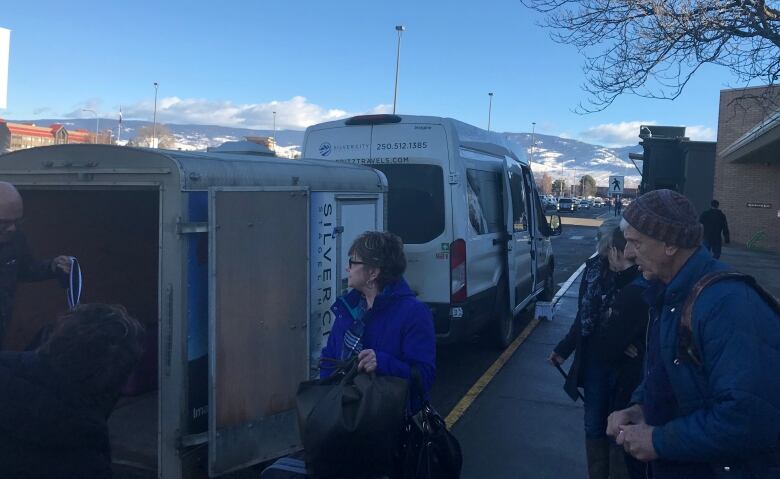'Still working on the next stage': Greyhound replacements in B.C. remain an uncertain patchwork
Whether some routes can survive without public subsidy still an open question

Once a week in northeastern B.C., among the trucks and trailers and the occasional car that travel the hundreds of kilometres of highway to Fort Nelson, a single bus comes and goes.
Leaving from Dawson Creek on Tuesday morning and returning Wednesday afternoon, B.C. Bus North is the only public transportation option for the province's northernmost municipality, set up by the government after Greyhound left the region.
There are generally between five and 10 people on board — but its importance can't be measured only in numbers.
"How would I get home? I guess fly, but then it's crazy expensive," said passenger Tara Credgeur, who said the government should advertise the service more.
Earlier this winter, her husband had to be medically evacuated from Fort Nelson to Prince George. Credgeur went along — but with his recovery taking weeks, she eventually had to head back to her work and kids.
Taking the bus saved her plenty of money, but the future of B.C. Bus North is in question. Ten months ago, the B.C. government created the service as a one-year pilot; and last week, Transportation Minister Claire Trevena couldn't say whether it would continue.
"We are still working on the next stage," Trevena said. "We've been able to make sure that people have been able to travel affordably and safely around the north of B.C. and we still want to make sure people can do that."

No East Kootenay route
While the government stepped in to create a public replacement for Greyhound in northern B.C., the rest of the province has seen a patchwork of private companies step in to cover most — but not all — of the previous routes.
"It took about three weeks for people to kind of get on that. We were slow to start, but then as soon as the word got out things picked up," said Craig Hubner, the only full-time driver for Silver City Stagelines.
The company replaced the West Kootenay operations of Greyhound, which Hubner previously drove for. Six days a week, it does a round trip between Nelson and Kelowna, stopping at a number of smaller municipalities along the way, all during the daytime.
It's a popular service, with the small bus near capacity most of the time, but there are no plans to expand to East Kootenay communities such as Cranbrook and Fernie.
"It would definitely have to be subsidized," said Hubner, explaining that because of the long distances and lack of a major population centre in the East Kootenay, it would be hard to find a route with the daytime hours needed to appeal to most passengers.
"I feel for the community that are without this service. It's a necessity for medical appointments. We certainly have a lot of people that are grateful we started up," he said.

'There needs to be mass regional transit'
Taking the Silver City bus from Greenwood to Kelowna for the first time in January was Ciel Sander, the boundary regional chair of non-profit group Trails B.C.
"Excellent driver. Very cautious. On time. If you don't have a car, it's the only option. So I'm really grateful that they're doing it," she said.
But Sander had the same concerns as others interviewed throughout B.C.'s Interior about the effects of the initial system that has replaced Greyhound: a lack of options, and a worry of its long-term effect on smaller communities with significant senior populations.
"There needs to be equity for the rural areas in B.C. There needs to be mass regional transit," she said, arguing it would help cut down on emissions as well.
For now, the government continues to express hope that private transportation solutions can be found for the entire province.
Six months into a post-Greyhound world, the jury is still out.
"We really need it," said Credgeur, "and I hope it ends up staying."